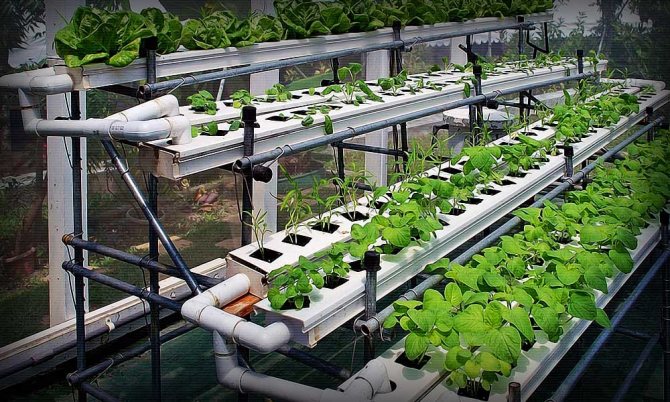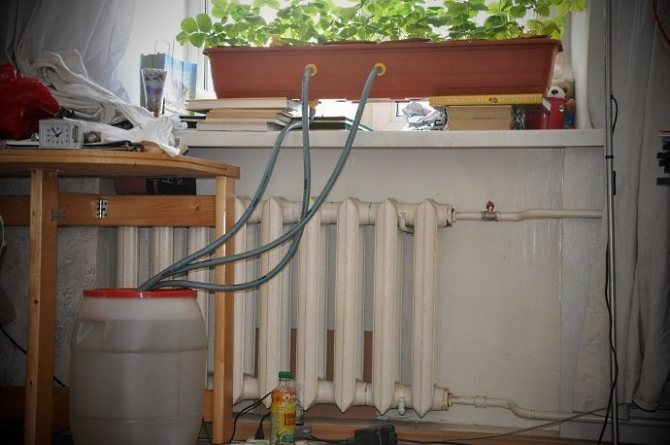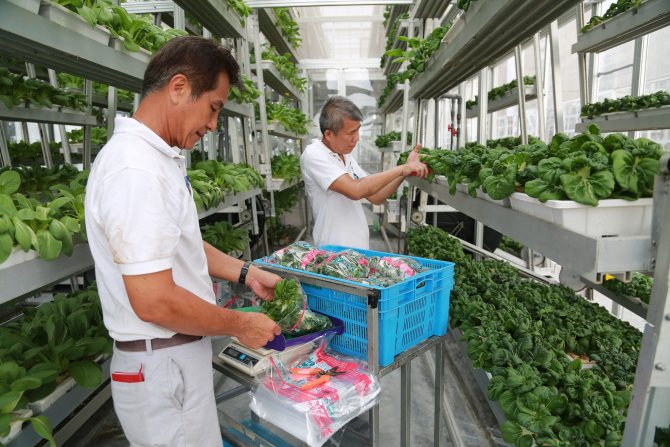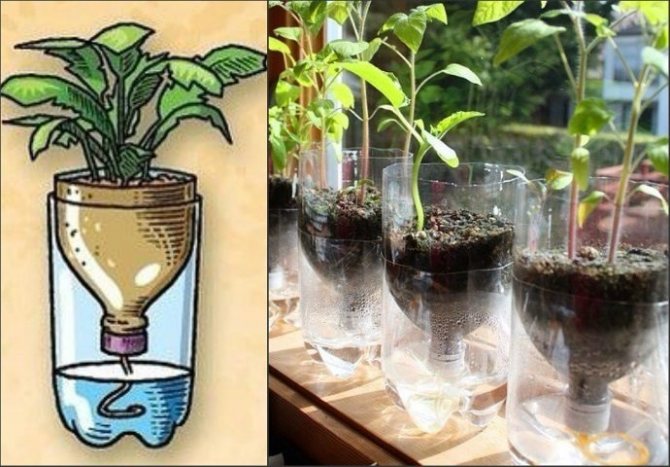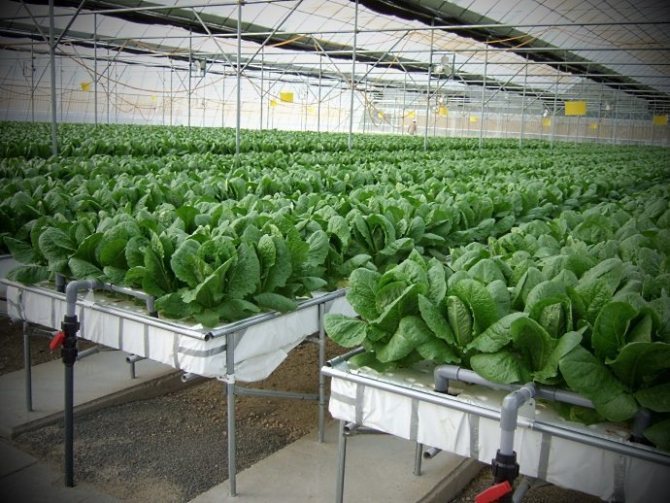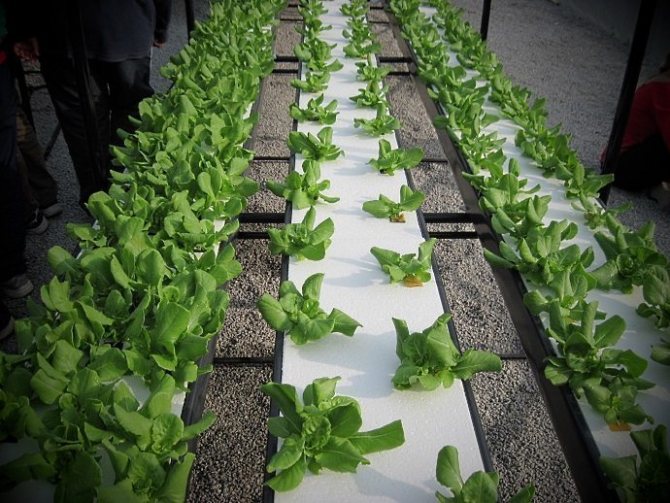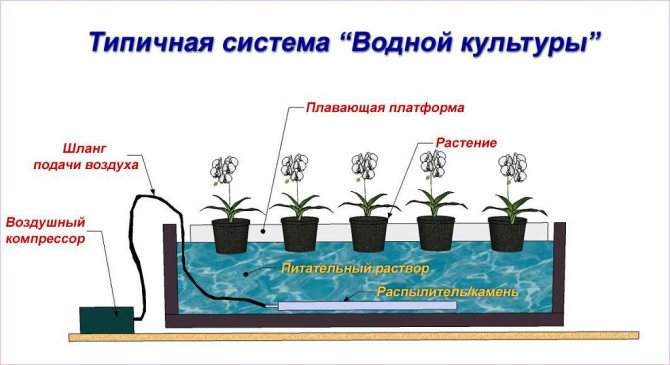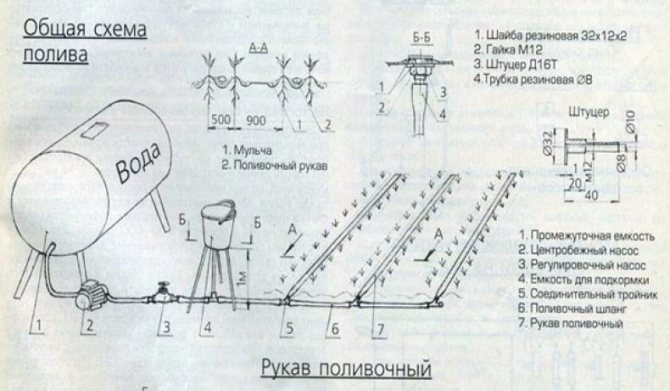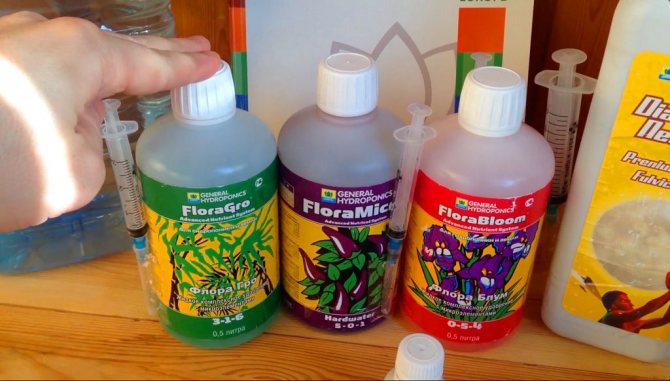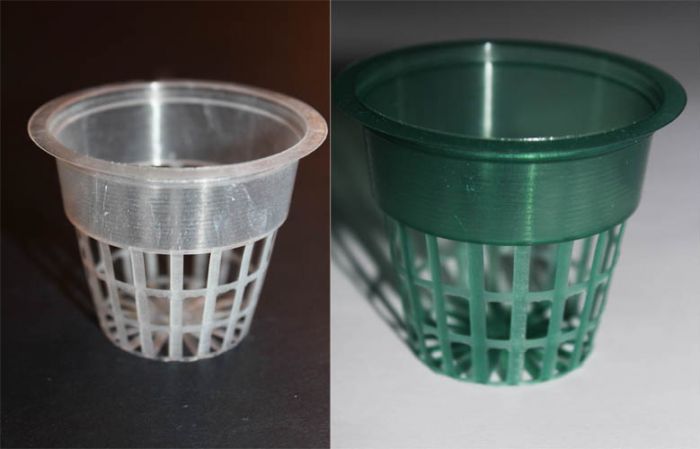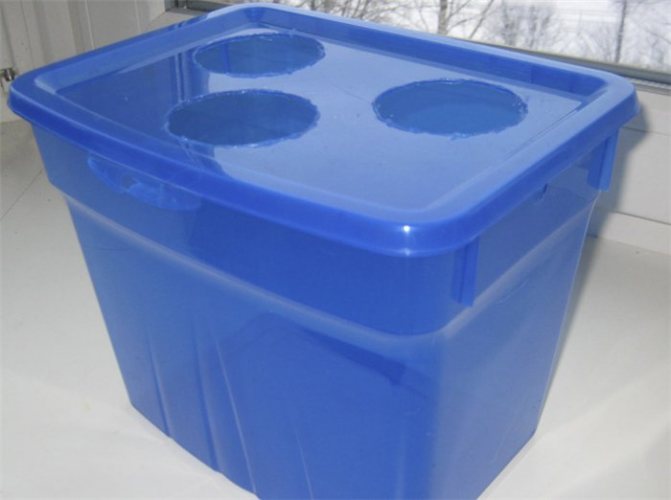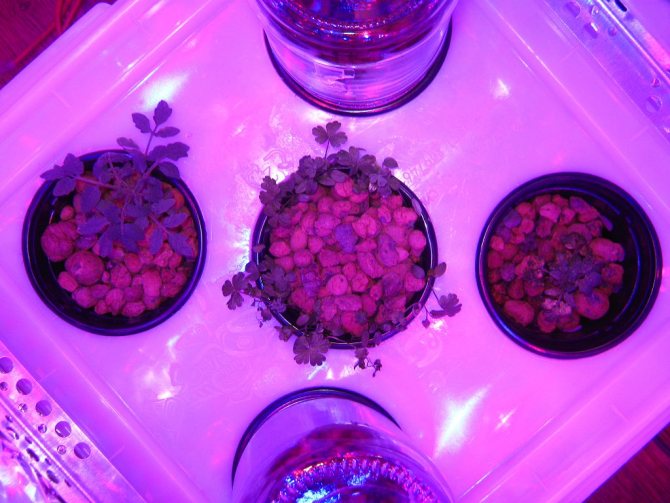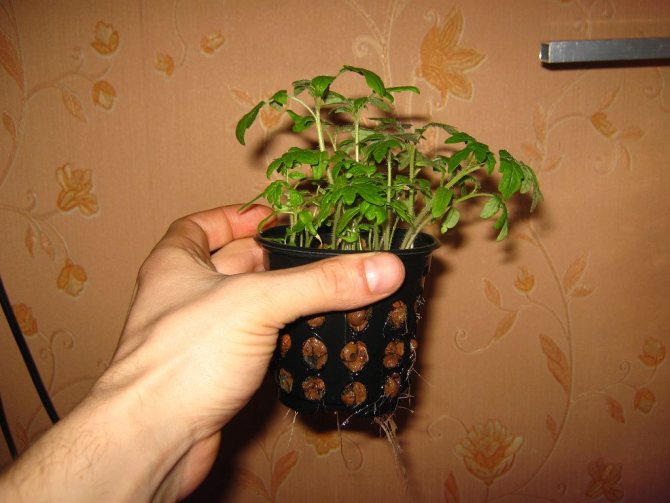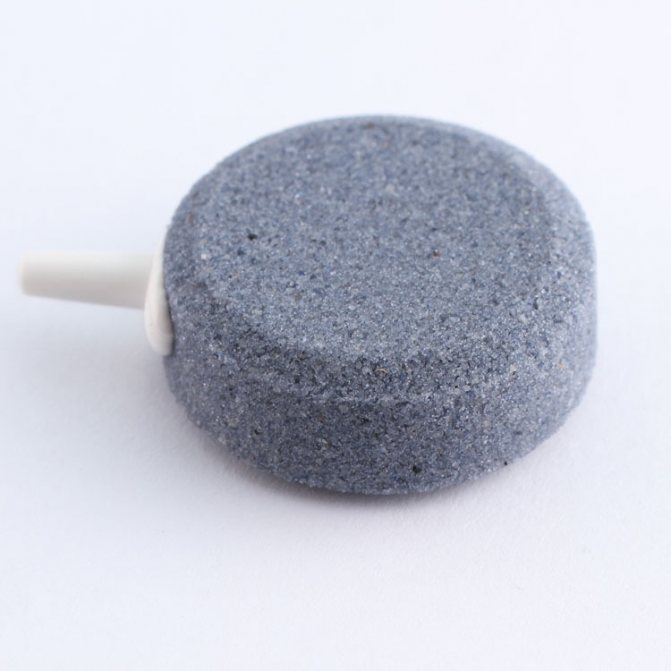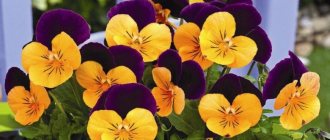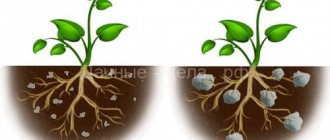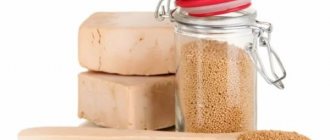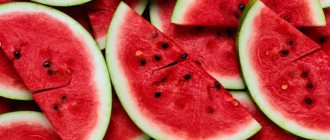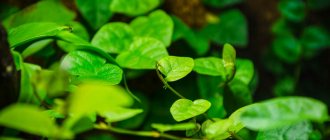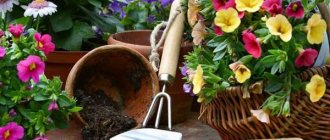Industrial greenhouses, which use the technology of growing plants without soil, are still surprising to many. After all, it is so unusual to see huge bushes of tomatoes with large fruits or powerful spreading stems of cucumbers, strewn with appetizing greens, growing not from the ground, but from boxes or special containers that do not contain even a gram of soil.
For people who do not understand this issue, this method seems to be the most modern invention of mankind. And someone, on the contrary, is thinking about how harmful it can be for those who eat the crop. Let's figure out how the plant can thrive without being planted in the soil, and is it possible to apply this method in your garden or even on your home windowsill for growing indoor flowers or vegetables.
About the method
The land for a plant is a source of nutrition that it must receive for its development and fruiting. The poorer the soil, the worse any culture develops. The whole history of the method of growing plants without soil was associated with a scrupulous study and analysis of the process of obtaining by a plant the substances necessary for growth and development.
The first experiments in this area began in the 17th century. It took humanity almost three centuries not only to figure out how and what plants eat, but also to learn how to grow them and get crops without using soil. All researches of scientists were carried out in two directions.
The first was associated with the study of the functions of the root system, which is a conductor and supplier of nutrients for the aerial part of the plant. Researchers in the second direction studied the composition of the nutrient medium in which the roots must be placed in order for food to be sufficient for the development of any culture.
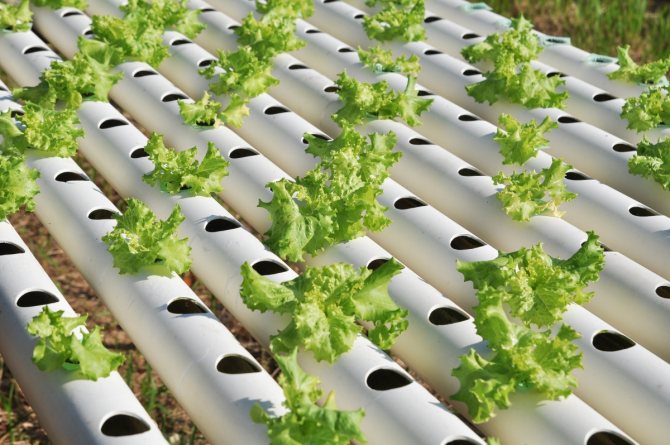
Photo: <>
As a result, it was found that the root system performs several key tasks:
- Absorption of water and its transport to leaves and stems. In search of moisture, the root grows up to two meters, and the total size of the entire root system can be 100 times the total surface area of the leaves.
- The assimilation of nutrients necessary for the growth of the aerial part, which in itself is a difficult task, since most of the salts are in the soil in a difficult-to-digest form. In order for the root to receive them, the soil must be inhabited by microorganisms that perform the task of processing mineral elements into a form accessible to the plant.
At the same time, without receiving oxygen, the root system cannot fully function: extract water and assimilate trace elements. Every gardener knows that all crops need regular loosening of the soil layer.
And this agrotechnical technique appeared thanks to research that proved that not only water, but also oxygen is the source of life for plants. Based on these conclusions, the inventors of the soilless growing method have created a system in which the plant does not need to look for water and spend energy on building a huge root system: moisture is always available in the necessary and sufficient amount.
In specially created solutions, all nutrients are supplied in a form that is available for quick assimilation, and a specific structure of growing substrates ensures a constant access of oxygen to the roots.
Scientists have carried out countless experiments, choosing the optimal composition of the substrate that can replace natural soil. They placed plants in sand, water, crushed stone, gravel, moss, combined the composition of substances that should be obtained by experimental samples. Thanks to the research work carried out, today there are several methods of soilless cultivation of crops using different types of substrates.
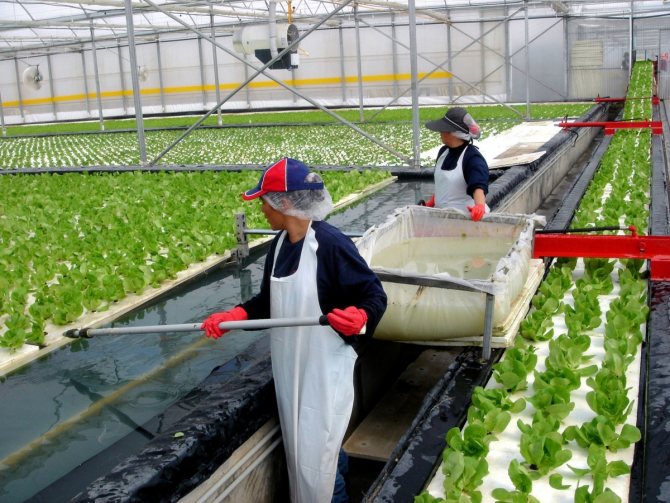

Photo: <>
Hydroponic method... When using the hydroponic method, cultivation is carried out in water using nutrient solutions. Plants are rooted in an organic substrate, which is laid on special mesh bases, dipped in a solution with a specially selected composition containing all the necessary salts and trace elements.
The main difficulty in using this method is to provide oxygen access to the roots, since the roots cannot be completely immersed in the solution, therefore, an air space is left between the roots and the substrate, in which high humidity is created, so that the root system does not dry out and die. At the current level of technology development, hydroponics can grow a large number of vegetables, indoor flowers and ornamental plants.
Aeroponics... With this growing method, neither soil nor substrate is used. Plants grow and thrive in humid air. To do this, they are placed in special vessels in which only the lower part of the root system is in an aqueous medium, and the rest of the roots are between the solution and the upper lid of the vessel. A special system carries out periodic humidification of the "air" part.
The second option for aeroponic cultivation is the creation of regular irrigation in vessels using special sprays, the action of which is similar to the principle of operation of any aerosol used in everyday life. In this case, sufficient humidity is created in the tank, and the required amount of oxygen is supplied.
Aquaponics as a symbiosis of methods... The main task of this method is the formation of a special ecosystem in which ordinary plants and an aquatic environment inhabited by fish and bacteria help each other to actively develop. At the same time, natural waste arising from the life of fish becomes the basis for the nutrition of bacteria and plants, which, in turn, by feeding on them, purify the water.
Technically, the problem is solved as follows: from an aquarium or reservoir, a pump supplies water to containers where plants are grown, similar to the hydroponic method with partial placement of the root system in an aquatic environment. The roots filter the water, taking away the necessary nutrition, and then the water is fed back into the reservoir. The method can be used both for growing indoor plants and for obtaining a harvest of greens or vegetables at home.
Chemoponics or chemoculture... The essence of this method is to grow plants in a substrate with no nutrient medium. It can be both organic material, for example, bark, sawdust or coconut shavings, and inert materials: sand, gravel, crushed stone, brick. In this case, all nutrition is carried out through irrigation with compositions containing a full range of minerals, salts and trace elements that are needed for a particular culture.
This cultivation method has gained particular popularity among fans of cactus cultivation and among producers engaged in the cultivation of this crop on an industrial scale in specialized greenhouses.
Chemoculture allows you to dose irrigation, and the specificity of the substrate used allows you not to overmoisten the root system of cactus plants that cannot tolerate prolonged excessive moisture, since, for example, inert materials quickly pass water and dry out just as quickly.
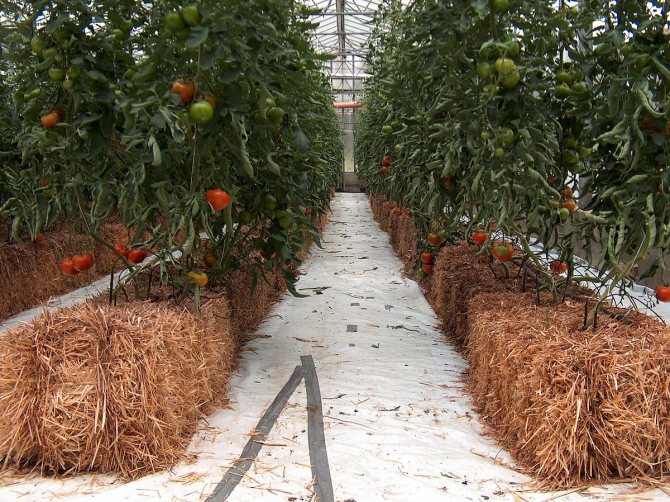

Photo: <>
Ionoponics or ionitoponics. Man's new step towards the creation of artificial soil. Ionoponics is an actively developing area in soilless plant growing technology. The method is based on the use of synthetic substrates created from ion exchange resins, fabrics, and polyurethane. All these materials are able to carry out ion exchange between themselves and plants, giving off useful ions of calcium, magnesium, phosphorus, potassium and taking away the waste products of the plant, secreted by the root system.
Unlike other methods, not a specialized composition is used for irrigation, but ordinary clean water. The exchange process itself takes place in an aquatic environment: the plant is planted in a substrate, and the lower part of the root system is immersed in the flooded water.
On an industrial scale, soilless cultivation technologies make it possible to obtain high yields of fruits and vegetables in the desert and even Antarctica, which were previously considered completely unsuitable for crop production. Almost each of these methods can be implemented in a garden, a greenhouse, or even in an apartment.
What is hydroponics
So what exactly is hydroponics. Hydroponics is a way of growing greens, vegetables and fruits without soil. The plant roots receive nutrients not from the soil, but from a rather strongly aerated environment. It can be solid (air-capacious or porous moisture-capacious) or water. Such an environment must necessarily promote the respiration of the root system.
With the help of the hydroponic method, it is possible to harvest crops in the driest regions. But this does not prevent it from becoming more and more popular in the CIS countries, because hydroponics makes it possible to grow crops on an industrial scale, while occupying rather small areas.
Advantages and disadvantages
The main advantages of using cultivation technologies without soil include:
- An increase in the rate of plant formation, since the "life" time is spent exclusively on growth and development, and not on overcoming the difficulties associated with obtaining the required trace elements, water and oxygen.
- Increase in yield, since ideal conditions are created without stress, which often occurs when planting in the ground: drought, waterlogging, sudden changes in temperature, not always good nutrition.
- Reducing labor costs for cultivation: daily watering is not required, since everything is at the mercy of automation, there is no whole cycle of mandatory types of care work: weeding from weeds, loosening, feeding.
- No substitution of soil is required as a mandatory procedure for growing potted houseplants and flowers.
- The use of pesticides is completely excluded, since they are not required in a "sterile" soil free from pests and pathogens.
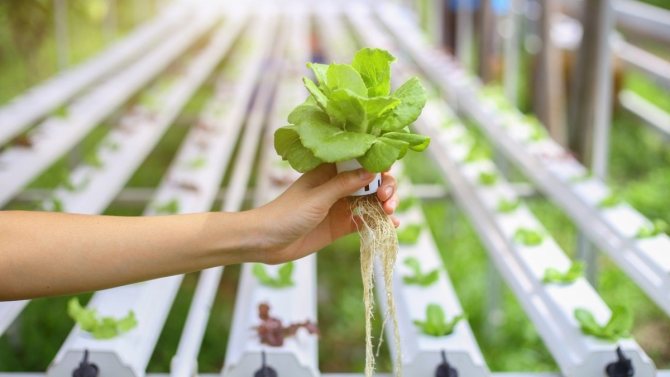

Photo:
But any method cannot consist solely of advantages alone. Cons can be considered:
- The need to have an understanding of the basics of soilless cultivation and technology in order to apply it correctly.
- Financial investments for the purchase of equipment, special formulations to ensure proper plant nutrition.
- Time spent on assembling the selected system.
- The presence of certain restrictions on the cultivation of root crops, since not all types of crops can be grown using, for example, the hydroponic method.
Hydroponic strawberries
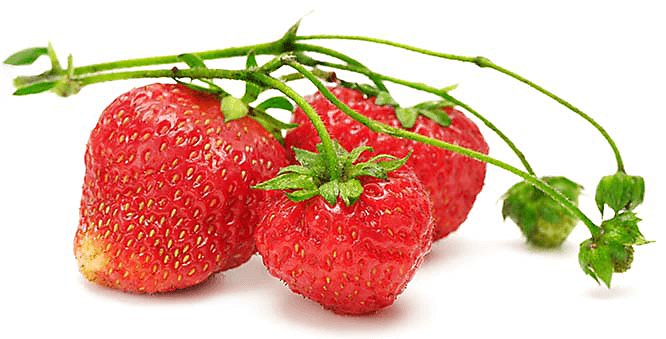

The worst thing about strawberries is their seasonality.If you cannot find the local berries when the harvest is harvested, then you have to rely only on the brought strawberries, which begin to deteriorate as soon as they are picked. With hydroponics, you can be content with ripe strawberries all year round. Harvesting is super convenient too - no more bending over into three deaths! For strawberries, a flood system is better, but for small crops, a deep water crop system and a nutrient bed system may also work. Find out what other berries you can grow hydroponically.
- Ideal system: Flood system, deep water crop system, nutrient bed system;
- Duration of growing: about 60 days;
- Best pH: 5.5 to 6.2
- Note: Don't buy strawberry seeds: they won't produce berries for a few more years. Instead, it is better to purchase seedlings that are already ready to bear fruit;
- Variety options: Brighton, Chandler, Douglas, Red mitten, Tioga.
What plants can be grown
The choice of plants depends on the goal pursued by the grower or vegetable grower. To obtain a harvest in the autumn-winter-spring period, the most profitable and beneficial will be the cultivation of useful greens: lettuce, spinach, green onions for feathers, parsley, and basil. For those who have experience in the cultivation of crops such as bell peppers, tomatoes, cucumbers, the task of obtaining these vegetables using systems that do not use soil is quite feasible.
For flower growers, the technology of growing indoor plants without soil will be of great help for forcing bulbous varieties of flowers. Also, many types of indoor plants can be grown using soilless methods. However, it must be remembered that a number of plants that require certain conditions of keeping during the dormant period must be transferred to soilless content carefully and methods must be chosen that make it possible to dose the flow of water and nutrient solutions to the roots of these plants.
Hydroponic bell pepper
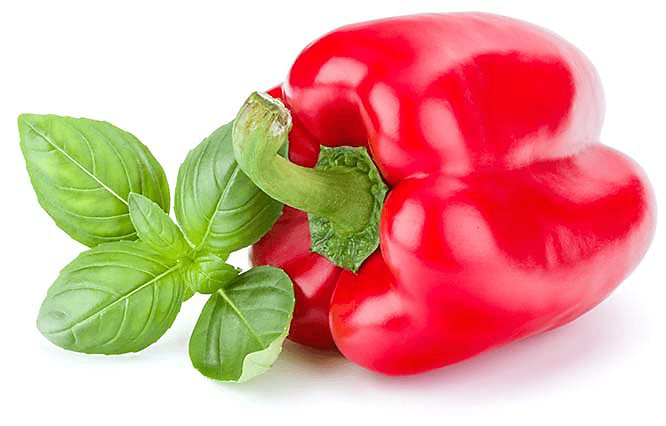

Bell pepper is a plant for slightly more advanced gardeners. Do not let them grow to their full height, but rather prune and pinch them at a height of twenty centimeters to speed up the growth of the peppers. The deep sea crop system and flood flood system are best for peppers.
- Ideal system: Deep sea crop system, flood system;
- Duration of growing: about 90 days;
- Best pH level: 6.0 to 6.5
- Note: Please note that this plant requires eighteen hours of daylight hours, and do not forget to raise the light level as the pepper grows, keeping the distance between the plant and the light within 15 cm;
- Variety of varieties: California Miracle, Yolo Wonder.
Vessels and equipment
In order to grow crops on your own without using soil, it is necessary to decide which of the methods will implement this task. Next, you need to select equipment in accordance with the selected technology and install it correctly.
When organizing a cultivation system without soil at home, as a rule, hydroponics is chosen as the simplest method, quite easily implemented in a house or apartment. For hydroponic cultivation you need:
- planting containers that have slots or holes so that roots can grow through them and gain access to water with a nutrient composition;
- containers in which the pots are placed;
- compressor, tubing and submersible sprayer to supply air to the roots.
If we talk about aquaponic systems, then they are often used by those who already breed ornamental aquarium fish. In this case, it can be chosen to place the unit directly above the aquarium.
Aeroponics - plant for growing
How does the installation for growing plants using the aeroponics method work?
In fact, it has a fairly simple device, which is based on the principle of constant access of oxygen to plant roots.
The device of the aeroponics installation is shown in the figure:
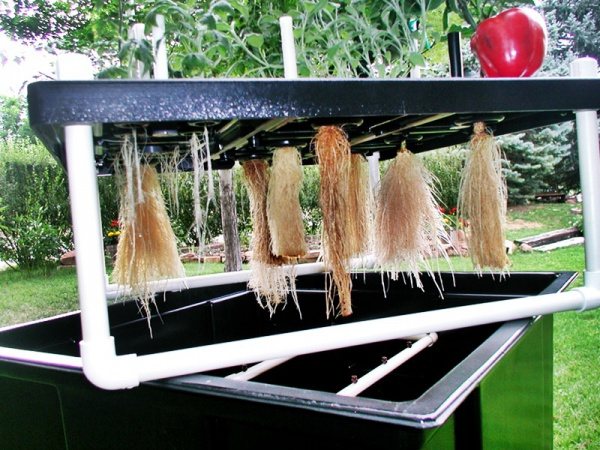

Types of substrates
Substrates in which plants for soilless cultivation will be placed must meet several requirements:
- do not react with substances that are part of nutrient solutions;
- have a slightly acidic or neutral reaction when interacting with water and solution;
- be loose to provide oxygen access to the root system;
- let water pass and not retain it;
- to be disinfected in cases where it will be necessary;
- keep the plant upright, preventing it from falling or tilting;
- do not restrain the development of the root system.
Many growers and gardeners are well aware of such a soil substitute as hydrogel, however, when choosing specialized technologies for growing plants without soil, it cannot be used, and you will have to choose another substrate that meets the requirements of the methods used.
Use of expanded clay
When choosing expanded clay, it is necessary to choose its small version with a granule diameter of up to 0.5 cm.Its advantages include:
- ability to absorb moisture;
- high air permeability;
- the structure allows roots to develop and penetrate through expanded clay;
- cheapness of the material.
The disadvantages include its ability to retain waste products of plants growing in expanded clay for more than 3 years, which requires periodic disinfection. The material can be used continuously for up to 10 years.
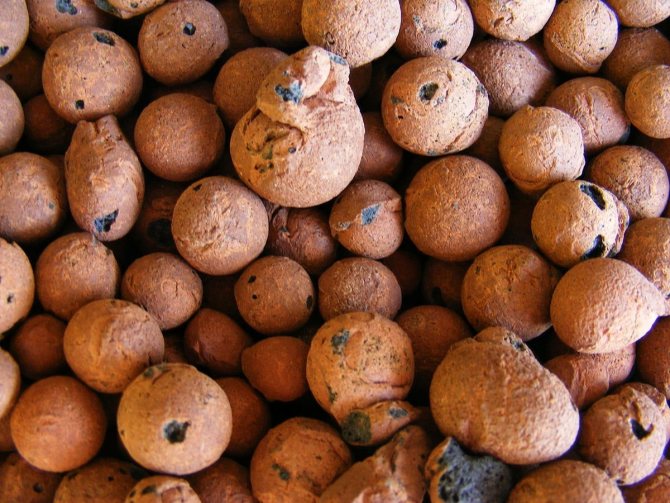

Photo:
Peat composition
When choosing peat for use in soilless cultivation technologies, it is necessary to pay attention to its characteristics. The best is peat obtained from raised bogs with ash content up to 12%. The moisture content of such a substrate should correspond to 60%. Since high-moor peat has a high acidity, before using it, it will need to be treated with chalk or dolomite flour.
Growing in the sand
Not all sand can be used for growing plants as a substitute for soil. It is necessary to choose only high-quality coarse quartz sand. Most often, such a substrate is chosen in the case of growing succulents, as well as for solving the problem of rooting cuttings. One of the advantages of sand is its long service life, up to 10 years. It is important to remember that the material must be rinsed before use. An indicator that the sand can be used for growing can be the clarity of the water after it has been washed.
Vermiculite application
Vermiculite is a natural material related to minerals with a layered structure. For use in floriculture and horticulture, it is heated, after which it swells and changes its shape. To use vermiculite as a substrate, it is necessary to choose material with fractional sizes up to 2 cm.
Smaller fractions will not allow the plants to receive sufficient oxygen. The fine fraction, as a rule, is used in the composition of soil mixtures used for growing seedlings of vegetable crops in the classical way or for home maintenance of indoor plants and flowers.
Large vermiculite absorbs water well and gives it to plants, does not retard the growth of the root system. The main disadvantage of substrates from this mineral is their fragility. The terms of use are limited to a maximum of 3 years.
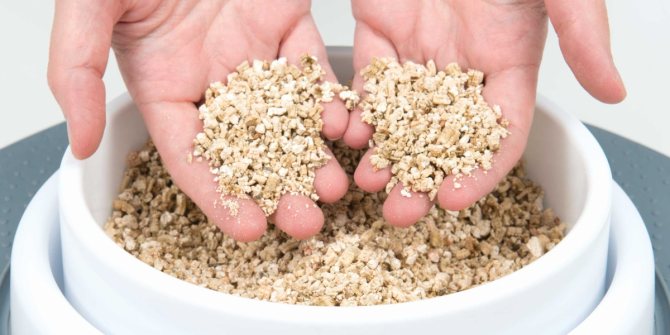

Photo:
Aeroponics - what is this technology?
With the development of agriculture, the number of inventions to simplify the work of the farmer is growing, advanced technologies for the cultivation and cultivation of various crops are developing.This is understandable, everyone wants to get the largest possible harvest, while making as little effort and money as possible.
Aeroponics is one such technology designed to speed up plant growth and increase yields, while making life easier for humans.
Aeroponic installations allow you to grow vegetables and greens all year round without the use of chemical fertilizers or other growth activators harmful to the human body.
Aeroponics is a product of the theory that oxygen is the most necessary factor for the rapid development and growth of any plant. In this regard, in installations built on the principle of "aeroponics", plants are grown by the method of active oxygen saturation of the roots.
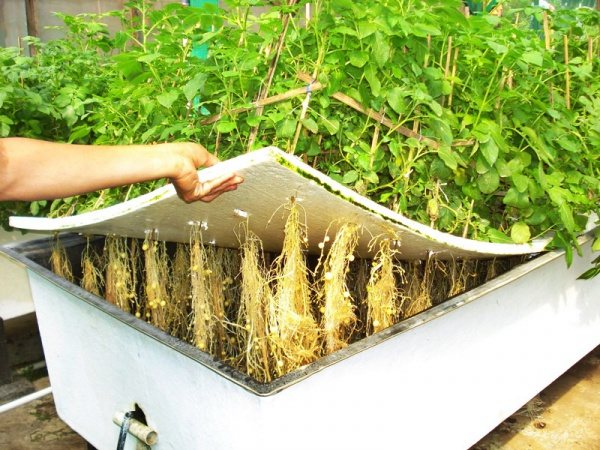

In this case, watering is carried out using drip irrigation systems, which saturate the plants with water and nutrients dissolved in it.
Nutrient solutions and rules for their preparation
When preparing nutrient solutions on your own, you must follow the selected recipe. Several such recipes have been developed today. In each case, it is important to adhere to the indicated volumes of substances. Phosphorus, potassium, magnesium and nitrogen are most commonly found in nutritional mixes. The basic rules for the preparation of solutions include:
- Use of water settled within 24 hours.
- Purification of the entire used water volume through a filter.
- Compliance with water heating to a temperature of 20 ° C.
The most balanced options are ready-made solutions created by hydroponic system manufacturers.
Hydroponic salad
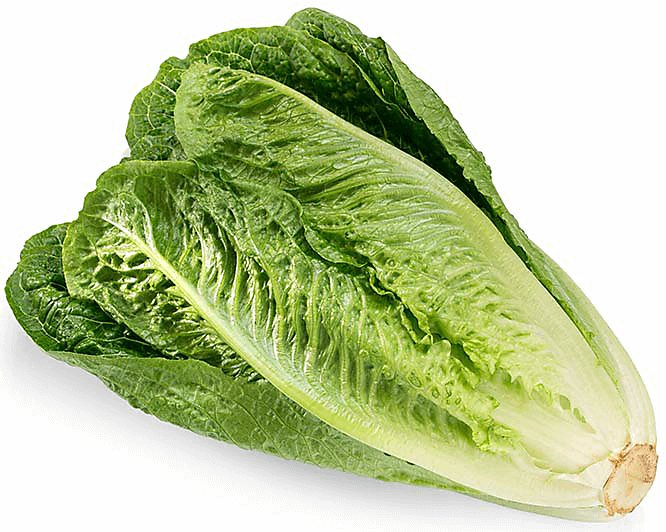

Lettuce (and other leafy greens) should be tried first on your hydroponic system. These plants have a shallow root system, which is combined with a small leaf height. This means that there is no need to tie them up or install supports for them. Instead, you should simply let them grow by checking their nutrient solution regularly. And one day it will look like it will want (and even be) eaten!
- Ideal system: Nutrient layer system;
- Duration of growing: about 30 days;
- Best pH: 6.0 to 7.0
- Note: it is better to plant not all at once, but gradually, then you will always have a salad for lunch!;
- Variations of varieties: Romano, Boston, Iceberg, Boiled buttery, Bib-lettuce.
Ready systems
A system for growing plants using hydroponics or aquaponics can be assembled by hand. To date, many options have been invented that are already used at home by flower growers and vegetable growers. They are actively sharing their experience by posting detailed videos on the network showing the technology of self-assembly of such self-made structures.
For those who are not ready to spend time on their own design of a system for growing flowers or vegetable crops without soil, a fairly large assortment of ready-made systems of Russian and foreign manufacturers is offered. Today you can find and buy hydroponic and aquaponic systems for home use in different sizes and operating principles.
Their main disadvantage is the rather high cost. Moreover, the larger the installation and the wider its capabilities, the higher the price becomes. For those who would like to use the methods of growing plants without soil, it must be borne in mind that in addition to the finished system, it is necessary to independently assemble or purchase additional lighting modules for supplementary lighting of plants during the growing process.
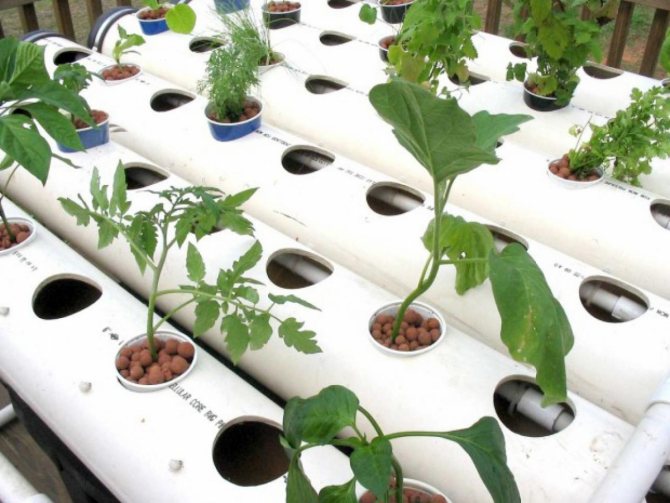

Photo:
Disadvantages of hydroponic methods
There are very few disadvantages of hydroponic methods, but they include:
- The high cost of the system. At first glance, it may seem that buying a ready-made product is much more profitable.
- The duration and complexity of the process.
If you seriously decide to tackle this issue, then prepare everything you need for hydroponics in advance. Of course, the equipment will cost a lot of money, but the plants grow faster and require less maintenance, so it will pay off.
Source: https: //enn.imadeself.com/bok/748-chto-takoe-gidroponika-kak-vyrastit-klubniku-bez-grunta.html
Transfer of plants to soilless cultivation
For those who have decided to transfer plants from ordinary soil conditions to a soilless environment, we will briefly describe the technology and procedure for solving this problem. First, the system is assembled and installed, and additional lighting is installed.
It is important not to install the system in places with bright sunlight while the plants are adapting to new conditions. Now you need to prepare the plants. The main task is to completely remove the soil from the roots so that it does not fall into the installation. To do this, rinse the roots in water at room temperature, as carefully as possible, without damaging the root system. Next, the plant is placed in special planting containers with a substrate and watered with plain water.
In order to strengthen the root system, water with the addition of a root formation stimulator is poured into the installation for a week. During the week, the system will operate using this composition.
Next, you will need to update the water: the original mixture is completely removed, and the container is filled with a nutrient solution. Now it is necessary to change the solution in a timely manner in accordance with the manufacturer's recommendations. As a rule, replacement is carried out once every one and a half or two months.
Growing plants without soil allows you to get healthy greens and vegetables even at home all year round, to create wonderful compositions from indoor plants, without spending effort on watering and annual replanting. At the same time, the installations themselves do not take up much space, they can be placed vertically in several levels, which allows you to significantly expand the landing area without taking up large spaces in the house or apartment.
Those interested in expanding the range of applications for soilless growing systems use hydroponic plants in their greenhouses and appreciate the quality of their crops.
How to transplant strawberries from the ground
Agriculture is developing in step with the times and the question "How to grow strawberries hydroponically?" has long been studied. For transplanting strawberries from soil, only young, healthy and well-growing specimens can be used. Followed by:
- It is good to fill the plants with water the day before transplanting.
- Free the roots of the plant from the ground.
- Rinse the roots with warm water.
- Remove rotten, damaged or long roots.
- Put the plant in a hydroponic pot.
- Pour warm water into the outer vessel without adding fertilizer.
- Cover the plant with foil for two weeks to prevent moisture evaporation.
- When the liquid has practically evaporated, you can start feeding.
Briefly about the technology of cultivation without soil in water
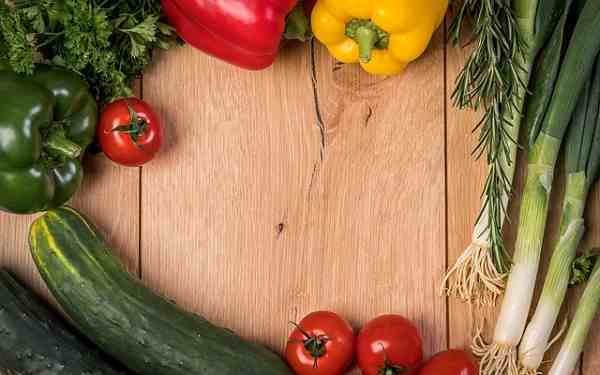

Excellent cultivation results without soil on water
In fact, in the development of the entire flora of the planet, soil plays a secondary role, while the main one belongs to dissolved nutrients. Describing the fertility of agricultural land, any farmer will talk about the amount of nutrients, the water level in the territory of the farm, the intensity of evaporation, irrigation - these are the factors that determine the yield. Growing any crop without water is impossible.
The soil has completely different functions:
- support for which stems and trunks cling to with the help of the root system;
- contains food, is a habitat for microorganisms that promote soil formation, saturate it with air.
Scientists-agrochemists in various ways came to the conclusion that it is possible (subject to rapid population growth, it is necessary) to be used in agriculture, along with traditional, groundless methods of growing.
Since the first positive experience, several methods have been developed to provide people with fresh food all 365 days in a row under any climatic conditions. It is based on saving resources, creating conditions for growth and fruiting that are optimally close to nature: lighting, temperature, humidity.
Hydroponics in drug production
The prospect of technology was quickly appreciated by numerous criminals who make money from selling drugs. As a result, hemp began to be grown in the laboratory using the technique.
The transformation of technology has led to the fact that the drug obtained in this way has changed properties and characteristics:
- the herb acts faster and stronger, to obtain the effect, a lower dosage is enough;
- the composition negatively affects the internal organs and systems of a person;
- promotes the development of diseases of the broncho-pulmonary tract, including incurable, for example, cancer;
- disrupts the work of the digestive tract;
- promotes increased blood pressure, increased heart rate;
- leads to impotence in men and infertility in women or physical and mental abnormalities in the fetus;
- promotes degradation processes in the brain, reduces the level of intelligence.
The consequences for the body can be irreversible and even tragic. Regular use of narcotic hydroponics leads to the development of anxiety, stress, depression, hallucinations, severe physical disorders. Patients have constipation, which contributes to toxic poisoning of the body.
Many addicts choose the wrong dosage when switching from conventionally grown to hydroponic herb. As a result, the state of health significantly deteriorates.
Regular use of hydroponics leads to the complete degradation of a person.
The drug causes addiction in the shortest possible time. Getting rid of it is difficult enough. This will require long-term hospital treatment and communication with psychologists. In the clinic, competent specialists work with such patients. Doctors have extensive experience in this area. The medical institution uses promising techniques.
Soil cultivation
Soil of natural origin contains humus - a large number of microorganisms, in the process of their vital activity, substances useful for the plant are released. Also, the soil has buffering properties, it is able to absorb and store nutrients.
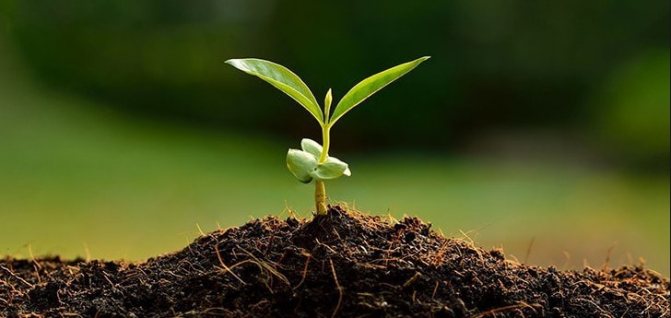

The soil can be conditionally divided into three components:
- solid
- liquid
- gaseous
Solid
Solid components include inorganic substances obtained by weathering and destruction of rocks. They include decomposition products of plants and animals, as well as microorganisms that absorb and process this organic matter. As a result of the vital activity of these microorganisms, the soil is saturated with carbon dioxide or CO2, as well as water. Mineral components are processed into a chelated form for plant nutrition, which allows them to easily assimilate useful elements.
The soil is rich in such chemical elements as: magnesium, potassium, nitrogen, phosphoric, sulfuric and nitric acid, copper, boron, etc.
Liquid
The liquid component of the soil is, logically, water that enters the soil with rain, or is present in it as groundwater. It is vital for plants to carry nutrients and perform various phytophysiological tasks. In general, any life on earth cannot develop without water and the plant is no exception.
Gaseous
The gaseous component includes oxygen and carbon dioxide, which are present in sufficient quantities in the soil. Oxygen is vital for the roots of any plant and, if the soil surface is strongly compacted, this can lead to an inadequate harvest and plant disease. In soil cultivation, it is necessary to aerate or introduce special microorganisms into the soil that produce oxygen and CO2.
Let's summarize. Growing using soil is a fairly simple and traditional way. If the grower does not have a lot of experience, using soil is the most rational option.Because even if you overfeed the plant with a lot of fertilizer, due to the buffering properties of the soil, it will not cause significant damage to the plant.
What equipment is needed
The greatest demand today are professional installations, according to the principle of action, there are a large number of their varieties.
According to the method of water supply, there are three main types of installations: aeroponic, drip and periodic flooding, the latter are in greatest demand. But in any system, regardless of the method used, the nutrient mixture is supplied to the root zone, which greatly simplifies the assimilation of substances useful for plant growth.
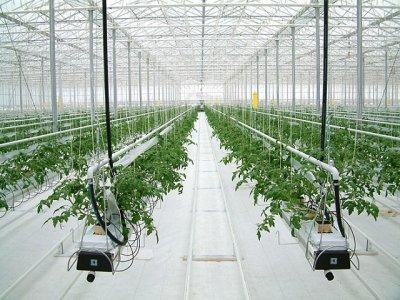

An indispensable element of any such system is hydro pot, consisting of an inner (most often plastic) and an outer container. At the bottom and walls there are holes through which oxygen and useful microelements enter the roots.
The plant is planted in an inner vessel filled with a substrate, which is used as expanded clay granules with a size of 2-16 mm.
The material is chemically neutral; due to the porous structure, excellent air and water permeability is ensured.
A device is placed in the inner container, which fixes the level of the liquid in the container. The outer pot must be airtight, beautiful and reliable; ceramics, metal, plastic, wood are often used in the manufacture.
Hydroponics can be made by hand, the necessary materials for this:
- a bucket with a lid with a volume of 10-15 liters;
- a pot, the capacity of which should be 2 times less;
- pump for an aquarium;
- parts of plastic pipes;
- expanded clay - granules should be large;
- timer (when using additional lighting, a separate timer is required).
Outcome
Hydroponics certainly deserves attention. This method allows you to control every stage of the growing process, save resources and produce a larger mass of more viable plants. But in order to do hydroponics, you definitely need to have experience with growing in soil. Hydroponics does not forgive mistakes and requires careful monitoring of the process, so it is best for beginners to try their hand at a traditional substrate. Experienced gardeners and, especially, owners of large greenhouses can safely use hydroponic methods to increase yields and accelerate the growth of their plants.
Plant types that can be grown without soil
Currently, the technology of growing plants without soil throughout the year has gained great popularity, using a special nutrient solution to feed them. This technology is called hydroponics and allows you to "garden" anywhere in your home or apartment.
Generally speaking, almost all types of plants can be grown without a soil. Consider first seedlings that can be transferred to a soilless type of cultivation. The most proven such crops that live on nutrient solution without problems are philodendron, phalangium, ivy, ficus, fatsia, common ivy, hoya.
When growing crops from cuttings or seeds using soilless technology, the choice of plant can be absolutely free. In addition to the above, asparagus, anthurium, indoor linden, coleus, begonia of all varieties, cissus, dracaena, monster, dracaena have proven themselves well. Separately, I would like to highlight the well-known cactus, which grows on a nutrient solution literally before our eyes, striking a huge number of large spines.
Calcephobic plants such as azalea, camellia, various types of heather grow well without soil, if the substrate is chemically treated with acid and the pH of the solution is maintained in the range from 4.7 to 5.8.Bromeliad cultures (Bilbergia, Guzmania, Vriezia, Aregelia, Tillandsia), which are mainly epiphytes (feed on both roots and leaves), grow well without soil, provided their leaves are filled with a solution that is diluted with water in a ratio of 1 to 10.
The most common vegetable crop grown by the soilless method is tomato. In addition to it, kohlrabi, cucumbers, radishes are developing well. A huge aesthetic pleasure can be obtained by breeding a banana in a nutrient solution. A banana requires a lot of nutrient solution, but after a year it "grows" up to two meters in height.
Thus, as you already understood, if you comply with all the requirements (for lighting, thermal conditions, the required level of air circulation and some others) that are individual for different types of plants, then absolutely any plant can be grown using soilless technology, getting indescribable pleasure from your year-round home garden. It is undesirable that asphalt paving is carried out next to the planted plants, because cars will often drive on it and this can damage them. The only exceptions are cars equipped with HBO from Slavgaz. They certainly won't do any harm.
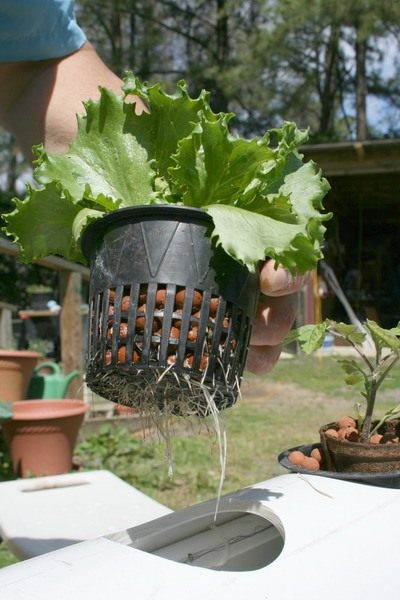

Lettuce grown in a hydroponic system.
What flowers grow from
The presence of potassium, calcium, iron, magnesium, sulfur, phosphorus and nitrogen in the saline solution enables the plant to develop actively. The plant looks like a person - if there is not enough potassium, then growth will slow down. In the absence of calcium, the rhizome dies off. For a plant to have green foliage, producing chlorophyll, it needs magnesium and iron. Sulfur and phosphorus are involved in the creation of the protein necessary for the functioning of the nucleus.
A scientist from the United States by the name of Gerikke in 1936 conducted a series of experiments on growing vegetable crops in solutions. It was he who called this method hydroponics. Soviet scientists succeeded in this direction a little later - at the end of the 30s of the twentieth century. Not everything went smoothly; in the aquatic environment, due to a lack of oxygen, the roots of plants died off. The solution reacted unstably, and the specialists continued the experiments.
Scientists realized that plants began to rot due to the large amount of water. Therefore, they began to place the root system of the prototypes in a kind of neutral substrate. The roots are in a substrate that is submerged in a nutrient medium of the desired consistency - this is the essence of the hydroponic method.
Planting and growing
Before growing green crops, the location of the hydroponic facility should be determined. This is usually a windowsill or balcony. In addition to the nutrition that it provides it, you will need good lighting and an optimal temperature. In no case should we forget about these requirements.
The choice of substrate is also important. Although they are of two types - organic and artificial, they have a common property. It is resistant to water and chemicals.
The following types of substrate are most applicable:
- expanded clay is a type of clay formed under the influence of a sufficiently high temperature. It can be used many times, it is enough to rinse and dispose of debris;
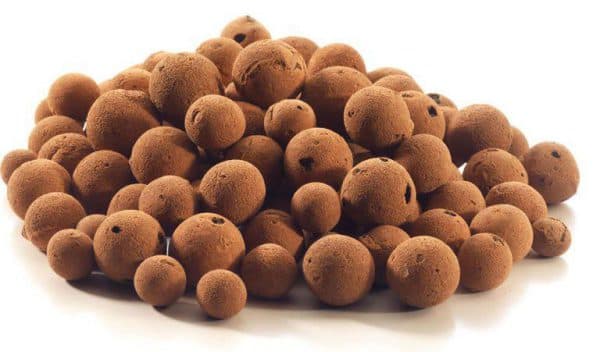

Expanded clay
- mineral wool is an inexpensive but effective material, which, however, requires careful handling (it consists of microparticles that irritate the eyes and respiratory tract of a person). In addition, this material is almost non-degradable, so it can be difficult to dispose of;
- coconut substrate - is able to accumulate useful components and “feed” crops with them for a long time;
- vermiculite and perlite - it is better to use them together, because they complement each other well in their properties: the first one provides the soil mixture with looseness and sufficient water supply, the second one also retains moisture and does not react to chemical fertilizers.
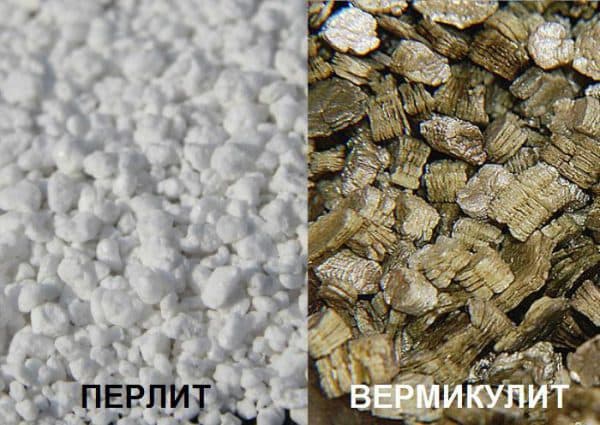

Having decided on the substrate, you can start sowing seeds.
Seeds
For sowing seeds, you need to take small pots with large holes at the bottom (you can use seedling containers). They should be filled with expanded clay, and a layer of vermiculite should be poured on top. Sow grains on it.
In a small pot you can put about: 30 seeds of parsley, dill, coriander; 20 - lemon balm, basil, sorrel; 3-4 - salad. The pots should be watered with water at room temperature, covered with plastic or glass. During germination, watering, if necessary, should be carried out with plain water.
When the seedlings are grown, the pots are placed in a hydroponic plant, where the final growing of the greens takes place.
Seedlings
You should be aware that the method of hydroponic cultivation of green crops mainly involves preliminary, germination of seed. This is done according to the above method. When 1-2 true leaves appear, which is a sure sign of the development of the horse system, the seedlings can be transferred to the substrate.
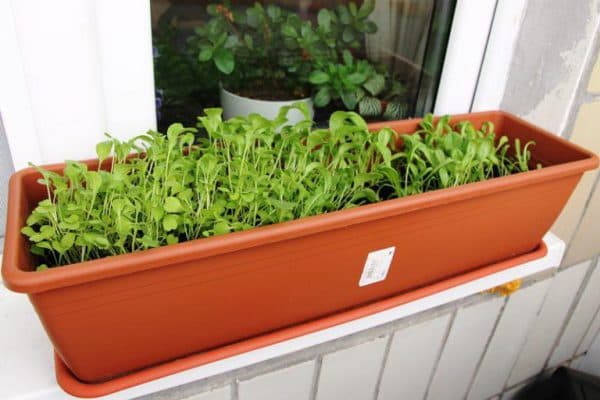

Seedling material
The young sprout is taken out of the pot along with the earth. Then the roots are carefully washed and, having straightened them well, they are placed in a hydroponic pot. After that, it is covered with a substrate. In this case, care must be taken that the roots do not touch the life-giving fluid. All the usefulness, as well as moisture, they will receive from the filler. By the way, immediately after planting the seedlings, ordinary water is poured into the tank of the installation. And when the plant adapts to new conditions for it (after about 7 days), a solution is poured instead of water.
Photo
The photo below shows greenhouses with hydroponic installations:
Useful tips for growing greens using a soilless method
Cultivating fresh herbs with this method is not difficult at all, but how much joy and benefits it brings! It is very important that plants in hydroponics receive a lot of light. Therefore, you need to purchase bright lamps and install them next to the seedlings. The backlight is usually used 12-14 hours a day.
This should not be done when hydroponing onions, parsley and dill. They can do without additional lighting.
In this case, the roots of crops are very vulnerable to oxygen starvation. Therefore, it would be nice to use aquarium spray stones in the tank of the installation.
DIY hydroponic nutrient solution change
From time to time, you should completely change your hydroponic nutrient solution and wash your pots. When using liquid fertilizers, this should be done after about 8 weeks, and when using ion exchangers, only when a new portion of fertilizers is applied after 4-5 months.
If you use a hydroponic nutrient solution for too long and constantly add fertilizer to it, some of the salts not consumed by the plants accumulate in such a concentration that they harm the roots. When changing the solution and washing the pots, the expanded clay and plant roots are washed simultaneously.
It's easy to change your hydroponics nutrient solution by hand. Do it like this:
- Remove the inner pot from the outer.
- Remove the water level indicator.
- Put the pot in the bath and rinse the expanded clay for 10 minutes with water from the shower (at least 15 ° C).
- The outer pot should also be rinsed thoroughly to remove any residual old nutrient solution.
- Place the inner pot with the water level indicator in the outer pot again.
- Fill in the nutrient solution.
How to tell if a loved one is addicted to marijuana
Most addicts see nothing wrong with smoking weed. They do not admit that they are addicted. The task of relatives is to independently recognize a drug addict in a person and take appropriate measures.
So, you can understand that a loved one uses marijuana by a number of signs:
- a sharp change in mood;
- depression;
- redness of the eyes;
- excessive activity;
- aggression for no reason;
- lethargy;
- suicidal thoughts;
- ill-considered actions.
An overdose of marijuana leads to nausea, vomiting, dizziness, headache, and withdrawal.
Breakage is manifested by painful sensations in the abdomen, loss of appetite, nausea, body cramps, depression.
The use of marijuana leads to damage to the cardiovascular system, respiratory system, and gastrointestinal tract.
However, weed has a devastating effect not only on the body, but also on relationships with relatives, friends, and work colleagues. As a result, a person becomes an outcast.
It is important that relatives do not turn away from the addict and convince him to go to a medical institution for a course of therapy and rehabilitation. Otherwise, the use will gradually kill the addict.
Features of growing greens in hydroponic greenhouses
Plant roots need not only nutrients, but also oxygen, otherwise they can simply die. All plants necessary from time to time provide air intake... Hydroponics in a greenhouse should provide an even flow and drainage of liquid.
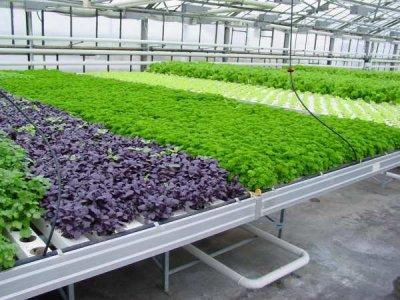

This function is provided by an electric pump, which provides the necessary conditions for the development of plants.
It should be noted that the main feature of a hydroponic plant is its isolation; plants grown in this way do not need to be cleaned of weeds, pests and diseases. A hydroponic greenhouse or a greenhouse without irrigation is a great invention that is gaining more and more popularity.
Efficient grow lighting is the key to success
Light is the most important component of your entire growing system. If you want crops to be frequent and plentiful, then the light source must be powerful and bright. The type of lamp you use will determine not only whether the grasses survive or not, but also how quickly and confidently they grow.
Commercial office-type fluorescent lamps have long been used by home gardeners. They will support the life of your plants and even give some growth, but the use of modern fluorescent lamps designed specifically for plants will give a noticeable acceleration of growth. Fluorescent bulbs are affordable, consume less electricity than other types of bulbs, and do not generate much heat. They do not require frequent maintenance and, when used correctly, it is possible to grow enough herbs for the serious culinary enthusiast. A 150 watt lamp is sufficient for lighting up to 1 square meter of area.
The modernization of the spectra and luminous intensity of modern fluorescent lamps, designed specifically for indoor plant growing, has led to the emergence of powerful T5 lamps, which are a good choice for the home gardener. A T5 fluorescent lamp system emits approximately twice the light of a standard T12 lamp. Again, placing the lamp close to the plants and using reflective materials to focus the light in the grow space will greatly improve your results. Since these lamps generate very little heat, they are suitable for hot places such as attics, especially if you place the lamps very close to plants.
Basil under T5 lamps
For those gardeners looking to get fast and serious harvests, it is worth paying attention to gas discharge lamps. They usually range from 250 to 1000 watts. It is very important to choose a lamp of the correct wattage, which is right for your area. A lamp that is too weak will give uneven results no matter how much reflective material you use. A bulb that is too powerful will overheat your grow space, and your electricity and bulb component bills will be huge.A rough recommendation for lamp wattage is 400 watts per 2 square meters.
Gas discharge lamps are of two types: metal halide and high pressure sodium. Both types of lamps require additional ballast - electrical equipment that allows you to create the voltage and current needed by the lamp. Metal halide lamps, due to their blue spectrum, are recommended for the cultivation of green herbs, as it promotes the growth of green leaves. High pressure sodium lamps (usually of the HPS type), with their white-red spectrum, are best suited for the growth of flowering plants (using HPS lamps can provoke unwanted flowering of herbs such as basil, followed by seed formation). Sodium lamps are best suited for flowering herbs that are prized for their flowers: chamomile, calendula, borage, and others. Correct positioning of the lamp and reflector is very important. You should be able to lower the lamp as low as necessary so that you can then raise the lamp higher as the herbs grow. To do this, you need to hang the lamp with cables or chains, securing them to sturdy frames so that you can easily move them up and down.
Grow tent with a HPS lamp can bring huge harvests
LED bulbs are also slowly gaining popularity. Advances in LED technology have made it possible to adapt them to small-scale herb cultivation, but the cost is still too high for the average gardener enthusiast. They have several advantages: they use less electricity, generate less heat, and last five or six times longer than gas discharge lamps. They also do not require additional ballast. How much this all justifies their high price is still an open question. However, there are examples of successful applications of LED lamps, in addition, LED lamps are available in different spectra: lamps with a lot of blue light are better suited for growing herbs than others.
Connecting electricity to lamps and ventilation requires special attention. You need to design your grow space in such a way that all electrical appliances - lamps, sockets, plugs, wires, ballasts - are elevated above the surface and located away from wet places and water. Water and electricity in one place always pose a potential hazard. While most home gardeners do not need this, more powerful and complex systems that consume large amounts of electricity should be connected through their residual current circuitry. If you are not well versed in connecting electrical appliances, then it is better to ask for help from a qualified specialist. As always when it comes to electricity, safety is paramount.
The light source should be located as close to the plants as possible, but not burn them. You can check the proximity of the lamp by placing the back of your hand over the tops of the plants. If your hand is too hot, then raise the lamp higher.
Multilevel cultivation under fluorescent lamps
Gas discharge (metal halide and HPS) lamps must be connected to ballasts that match them in type and capacity (some ballasts can be connected to both types of lamps if the wattage is the same). We advise you to check this information with the lamp dealer.
Benefits of hydroponics
Hydroponics has great advantages over conventional (soil) growing methods.
Since the plant always receives the substances it needs in the necessary quantities, it grows strong and healthy, and much faster than in the soil. At the same time, the yield of fruit and flowering of ornamental plants increases several times.
Plant roots never suffer from drying out or lack of oxygen during waterlogging, which inevitably occurs during soil cultivation.
Since water consumption is easier to control, there is no need to water the plants every day. Depending on the chosen container and growing system, you need to add water much less often - from once every three days to once a month.
There is no problem of lack of fertilizers or their overdose.
Many problems of soil pests and diseases (nematodes, bears, sciarids, fungal diseases, rot, etc.) disappear, which eliminates the use of pesticides.
The process of transplanting perennial plants is greatly facilitated - there is no need to free the roots from old soil and inevitably injure them. You just need to transfer the plant into a large bowl and add the substrate.
There is no need to buy new soil for transplanting, which greatly reduces the cost of growing indoor plants.
Since the plant receives only the elements it needs, it does not accumulate substances harmful to human health that are inevitably present in the soil (heavy metals, toxic organic compounds, radionuclides, excess nitrates, etc.), which is very important for fruit plants.
There is no need to fiddle with the ground: hands are always clean; hydroponic vessels are lightweight; in the house, on the balcony or in the greenhouse, it is clean and tidy, there are no extraneous odors flying over the sciarid pots, and other unpleasant factors accompanying soil cultivation.
Simplicity and low cost.
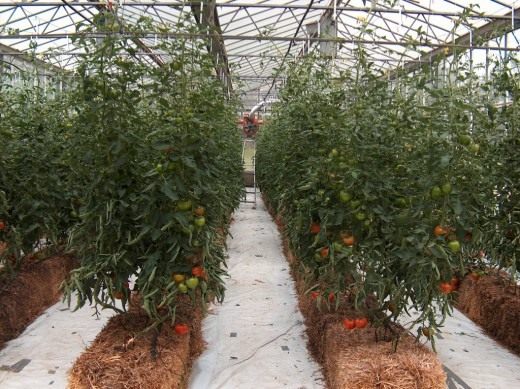

Industrial cultivation of tomato in a hydroponic system.
Aeroponics - the equipment needed to create a do-it-yourself installation
An aeroponic installation can be purchased. However, modern professional designs are not cheap. And if you do not plan to create a whole plantation for growing vegetables using the aeroponics method, then you can do it yourself.
What equipment is needed for aeroponic installation:
- A tank or container in which the plants will actually be grown. Such a reservoir should be opaque (sunlight can destroy the exposed roots of plants), have two levels: for a reservoir with water and for planting plants.
- Container for water
- Pump for supplying water to an aerosol sprayer. A pump for aeroponics must be powerful enough, so you can buy a special one, or, using the experience of other lovers of oxygen growing, adapt an automobile compressor or even a windscreen washer pump for this purpose.
- Water supply hoses to spray guns. The main thing here is to ensure the tightness of all joints.
- Nozzles for spray nozzles to plant roots: they should spray an aqueous solution to the state of a fine-droplet suspension. It has been proven that it is precisely this state of the aqueous solution that helps plants to assimilate all nutrients most quickly and efficiently.
- Plant holders are shelves that hold plant pots. These shelves are made of waterproof materials such as foam. The shape of the container for plants and their sizes vary depending on the type of crop being grown and the number of plants. It is clear that vegetables with large roots will require large containers, and for growing greens, you can get by with small pots.
- A timer is used to automate watering of plants. Here you will have to choose between mechanical and electronic timers. The former are more reliable, but they have a large minimum interval between "aerial irrigations" - more than 10 minutes (and many plants in the early stages of development require more frequent supply of moisture). The latter are more accurate, but also more expensive.
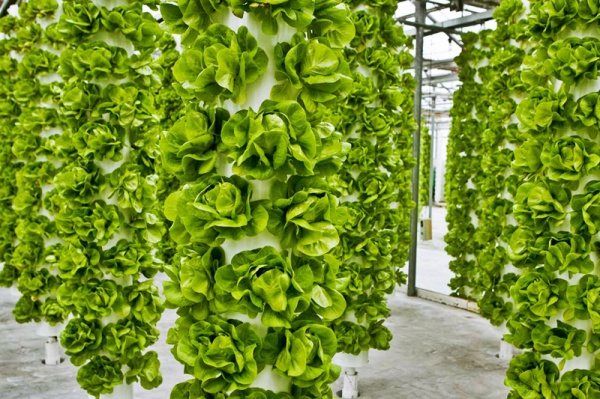

Aeroponics towers
Do-it-yourself aeroponics - video
What should be an aeroponics nutrient solution?
There is no consensus on the composition and recipe of a nutrient solution for growing plants using the aeroponics method, and there cannot be. Naturally, everything depends on the cultivated crop, the stage of plant development, etc.
But the main elements for creating a nutrient solution can be distinguished: these are potassium, phosphorus and nitrogen. Since the technology of aeroponics is quite young (it was invented in 2006), special mixtures made for growing plants using the hydroponic method can be used for the nutrient solution.
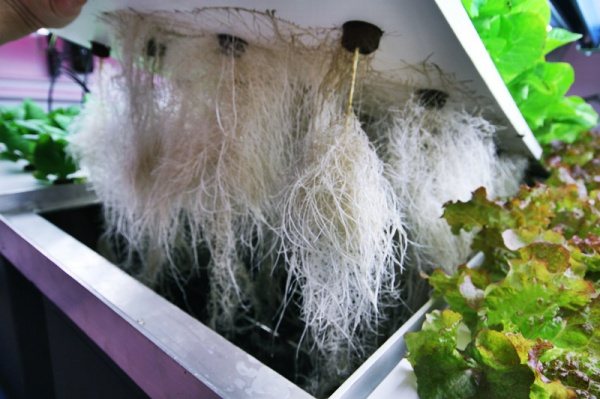

The main thing, perhaps, is to use high-quality water for aerosol irrigation - not piped and not hard.
Preparation of a solution for aeroponics
Ultrasound and Aeroponics
Some aeroponic installations use ultrasound for greater efficiency. Ultrasonic waves passing through an aqueous solution cause it to "bubble". The bursting bubbles release microparticles of water with nutrients into the air, which resemble fog in composition.
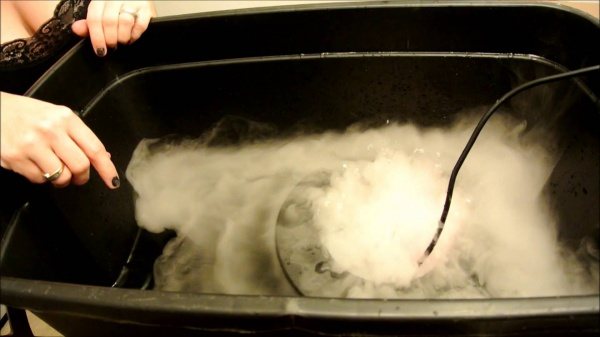

Ultrasound fog effect
True, the cost of such an ultrasonic installation will be quite high, since in addition to ultrasound sources, a special cooling system is also required - the temperature of the microdroplets formed by ultrasound reaches 40 degrees, while the solution supply temperature, favorable for plants, is 20 degrees.
Hydroponic system maintenance
The hydroponic system requires regular maintenance and maintaining optimal parameters of the growing environment. The following are the main factors you need to control:
- PH Monitoring - It is necessary to constantly monitor the pH of the solution to maintain an optimal balance for cultivation. Cannabis absorbs better nutrients when the environment is slightly acidic - pH 5.5-5.8. Use a pH kit or electronic meter, and remember to change the solution weekly to maintain this range. During flowering, the pH can be set closer to 6.
- Maintain the most favorable solution temperature. The optimum temperature for growing hemp is 20 ° C. Aquarium heaters and coolers, which are already equipped with the necessary automation, can be used to regulate small home systems.
- Provide the plants with the nutrition they need. The easiest way to feed plants is to purchase complex fertilizers for hydroponics, containing all the necessary substances for both vegetation and flowering. Advanced products have detailed instructions and dosage tables.
- Keep equipment and supplies clean - trays, containers, and tanks require regular (approximately every two weeks) cleaning and disinfection. It is also necessary to timely replace the nutrient solution with a new one - this will not only prevent the development of infections or parasites on the hemp, but will also allow the most accurate dosage of fertilizers. During operation, filters installed in pumps and compressors will serve well.
Pests in the soil of indoor plants
Mold infecting the soil of indoor plants is not the only problem of concern to flower growers. Often, when growing flowers, you can also encounter insect pests. Some of them affect the soil, harming the plant's root system.
Poor-quality soil and improper care of the plant can become the cause of the appearance of pests. In the fight against insects, special industrial preparations will help, as well as folk remedies, for example, a soap solution or a solution of manganese.
- Woodlice. They appear due to excess moisture in the soil. They are dangerous in that they harm the roots of the plant by eating them. When they appear, watering should be reduced. Insects can be removed manually.
- White bugs (podura) in the soil of indoor plants. They appear due to high humidity of the earth or air.The way to deal with them is that the top layer of the soil should dry out, after which they will disappear. You can also fight with chemicals: a solution of potassium permanganate, arrows Doctor, Aktara.
- Nematodes. Microscopic worms settling on plant roots. Excess moisture in the soil also contributes to their appearance. In the fight against these dangerous pests, anthelmintic drugs such as Decaris can be used. It is better to destroy a heavily affected plant to avoid contamination of other plants.
- Bulbous root mite. Harmful to Hippeastrum and other bulbous plants. Appears due to high humidity. Preventive measures: good drainage, moderate watering. The roots and bulbs affected by the mite are treated with an available systemic insecticide, for example, Aktellik, Aktara.

